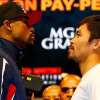Betting on short time windows is a great way to monetize your read of a game’s script. While the market prices the full match, you focus on a specific 5, 10 or 15-minute slice, a quarter, or a period. In these windows, tempo, fatigue, coaching adjustments, and team habits show up most clearly. Below is a breakdown of how “totals within a time interval” work, how they differ from the classic full-match total, and which techniques can lift your expected value.
What Exactly Counts as a Total Within an Interval
A total is a wager on “how much will happen” (goals, points, pucks, etc.) relative to the bookmaker’s line: Over or Under. “Within a time interval” means the prediction is limited to a chosen window: “0–15 minutes,” “first 30 minutes,” “second half,” “2nd quarter,” “3rd period,” and so on.
- Interval Total (both teams) — the combined output of both teams within the selected window.
- Individual Team Total within the interval — how much a specific team will produce in that window.
- Asian Total in the interval — split lines such as 1.25/1.75 that yield a half refund on borderline outcomes.
The key difference from a full-match total is that the bet’s result ignores all minutes outside the chosen window — only events inside the interval matter.
What Lines Bookmakers Offer
- Minute windows in football: 0–15, 16–30, 31–45 (sometimes without stoppage time), 46–60, etc. Example: Over 1.5 (0–30).
- Halves/periods: football Under 2.5 (2nd Half); hockey Over 2.5 (1st Period).
- Quarters in basketball: Team 1 Individual Total Over 22.5 (2nd Quarter) — Team 1’s individual total for that quarter.
- Special live windows: “next 10 minutes,” “to the 60th minute,” “after the 75th,” etc.
Important: house rules can differ on stoppage time and interval boundaries (e.g., whether 45+ counts toward “31–45,” and whether boundary minutes are inclusive). Check this in advance.
Where the Market Misprices: Recognizable Scenarios
Opening Barrages. Some clubs press aggressively in the first 15–20 minutes to seize an early lead. Against them, “Over in the first interval” often makes sense, especially if the opponent struggles to play out of pressure.
Late Surges. Teams with deep benches and high endurance frequently “switch on” after halftime. In football that’s “Over in the second half”; in basketball it’s “Over in the 3rd/4th quarter” when rivals lose pace.
Style Matchups. Fast, vertical sides versus possession-heavy opponents often create spikes in specific slices — e.g., the last 15 minutes of a half when sustained pressure converts into xG.
Special Situations. In hockey — late-period power plays; in basketball — foul management of a star and “second units” at the start of each quarter; in football — set-piece routines near halftime.
Data Scouting: What to Check Before You Bet
- Tempo by slices. In basketball — quarter-by-quarter pace; in football — minute-by-minute attacking tempo and final-third touches.
- xG/xThreat by halves. Sides that consistently create before the break bust “Over 0–45” more often.
- Starting lineups and roles. A pacey winger “from minute one” — or a rotated attack — can sharply shift interval expectations.
- Recent form and fatigue. Third match in a week, travel, short rotations — these hit end-game segments hardest.
- Referee profile. High foul/card averages boost set pieces and late-half chaos in football; in basketball, strict whistles add free throws and inflate quarter totals.
Live Is Your Friend: Timing the Price
Interval totals are especially powerful in live betting. A simple playbook:
- Pre-match hypothesis (e.g., “Over 1.5 for 0–30 in a fast-starting marquee match”).
- On-field confirmation: pressing, shots, box entries — or in basketball, quick possessions plus fouls.
- Entry timing: after a couple of chances without a goal/points, the line may ease — don’t chase price blindly, but use temporary dips.
- Hedge/corridors: if the market posts an inflated line for the next interval, partially cover risk (e.g., Over 0.5 for 31–45 after an early goal and a tempo drop).
Worked Examples
Football. Barcelona — Manchester City. You take Over 1.5 (1st Half).
— If there are 2+ goals by halftime, the bet wins.
— 0 or 1 goal — the bet loses.
Why might this work? Both teams often start with a high defensive line and aggressive pressing, creating chances by the 10th–20th minute.
Basketball. Real Madrid — Olimpia Milano. Bet Over 35.5 (2nd Quarter).
— Score 36+ in the quarter — the bet slip wins.
— 35 or fewer — the bet fails.
Rationale: both teams have deep rotations and strong second units, and coaches tend to push pace in Q2 while the opponent is readjusting.
Risks and Rule Nuances
- Stoppage time and interval boundaries. Does 45+ count toward “31–45”? Are boundary minutes inclusive? Operators differ.
- Overtime. In basketball and hockey, overtime is typically not part of quarters/periods — don’t mix them up.
- VAR and long checks. Extended reviews eat “active” minutes — critical for tiny windows like “next 10 minutes.”
- Margin and line movement. Niche markets have wider margins; odds can jump on a single attack — size stakes conservatively.
- Match psychology. An early favorite’s goal can kill tempo till halftime; an underdog may drop into a block after conceding.
Pre-Bet Checklist Before Clicking 'Place Bet'
- You’ve chosen a clear interval and know exactly how your bookmaker counts it.
- There’s a statistical basis: pace by slices, xG by halves, historical quarter/period profiles.
- Lineups and roles support the idea: key pacey wingers/shooters are on in the right window, and there’s no hidden fatigue.
- In live play you see confirmation of the hypothesis (chance quality/possessions), not a hope-and-pray entry.
- You’ve priced the line: odds and margin, alternates, and the option to hedge in a neighboring interval.
- You know the failure scenario (early goal, playmaker injury, red card) and accept that risk.
Spot totals pay for concrete knowledge of tempo and rhythm rather than “general talk.” Bet when your match reading genuinely gets you ahead of the market, and limit exposure when confidence is thin — over the long run, that’s the strategic edge.






